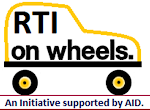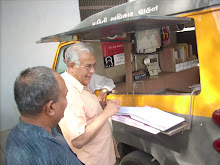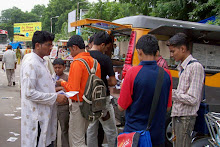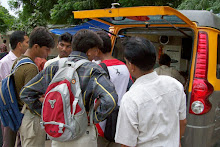Livemint: Osama Manzar: Monday, May 27, 2013.
The Indian
electorate would always be thankful to its democracy and its parliamentarians
that they passed the Right to Information (RTI) law so that citizens are able
to know everything that the government does. For RTI to be proactive and not
reactive, it is important that information is produced on a medium that can be
accessed anytime, anywhere and by anybody, the reason we see that most
ministries provide such data on their websites.
Interestingly,
while the administrative side of the government is proactive in sharing
information, the elected part is blissfully ignorant about such sharing. All the
bodies and departments under various ministries, including those up to district
administration level, are all on the web and have dedicated links on their
websites saying RTI. However, if you look for any of those constituency or
their elected members of Parliament (MPs) or members of legislative assembly
(MLAs), or panchayat members, you will neither find any constituency website
nor any website for that of elected members. It is quite ironical that the
people whom we elect every five years to represent our constituency have not
devised an institutional system to provide necessary information.
To grasp the
magnitude of the situation, we elect 545 MPs but there is no official website
where I could track my constituency or its representative on the progress it
has made and the questions asked in Parliament. The same holds for 4,011 state
lawmakers and some three million panchayat members.
On the other
hand, it is not that our MPs and MLAs or even sarpanches have totally been out
of touch as far as the adaptation of the Internet or digital media is
concerned. According to a survey by Digital Empowerment Foundation, 80 out of
545 Lok Sabha members are online (14%), more than the percentage of Indian
citizens online. Only 15 states have their MPs online, and another 15 states
have none. In the entire northeastern region, consisting of eight states, only
one parliamentarian is online, Agatha Sangma from Meghalaya. Andhra Pradesh
tops the list with 14 MPs online, followed by Uttar Pradesh (13), Maharashtra
(10), Kerala (8), Karnataka (7), Bihar (4), West Bengal (4), Tamil Nadu (3),
two each from Punjab, Haryana, Rajasthan, Gujarat, Madhya Pradesh and Delhi.
Uttarakhand and Orissa have only one MP online. The states having none of its
MPs online are Chhattisgarh, Jharkhand, Goa, Arunachal Pradesh, Jammu &
Kashmir, Himachal Pradesh, Manipur, Assam, Meghalaya, Mizoram, Nagaland, Sikkim
and Tripura.
The current
Lok Sabha has the highest number of women MPs ever at 59, 14 more than the last
House. But, only six women MPs are online.
While 86% of
the MPs could not be found online, those who have web presence have done so as
their personal endeavour. Almost all of them have their website on their
personal names, either in the form of website or a blog. It is obvious that
while 14% of the MPs who are online, none are officially so. It is important to
note that while MPs or elected representatives come and go, the constituencies
they represent remain. It is, therefore, critical that the Lok Sabha and all
state legislative assemblies decide that their constituencies should have
online presence and the given MP or MLA is the caretaker of the website who
should be made responsible to present the ins and outs of all that is happening
in the constituency, including how they are spending their constituency fund
and what questions are they asking in Parliament and assembly, among others.
Besides, there should be a provision in the fund to allocate appropriate fund
towards building, managing and updating the website, including web and other
digital media as tools to interact with the electorate.
Osama
Manzar is founder-director of Digital Empowerment Foundation and curator of the
mBillionth Awards. He is member of the working group for Internet proliferation
and governance, ministry of communication and information technology.















































































